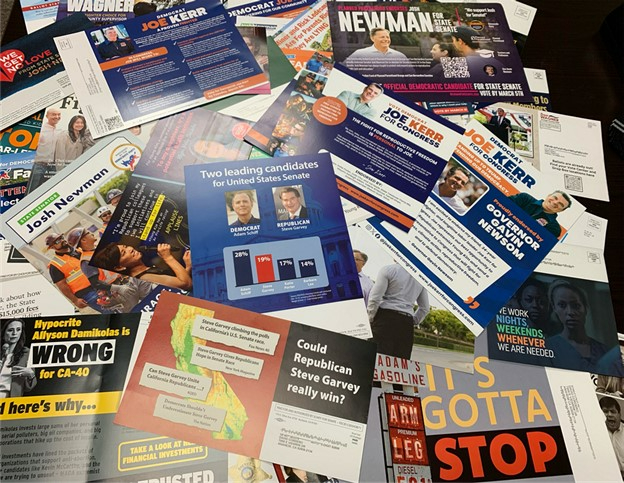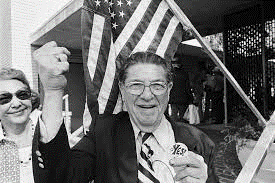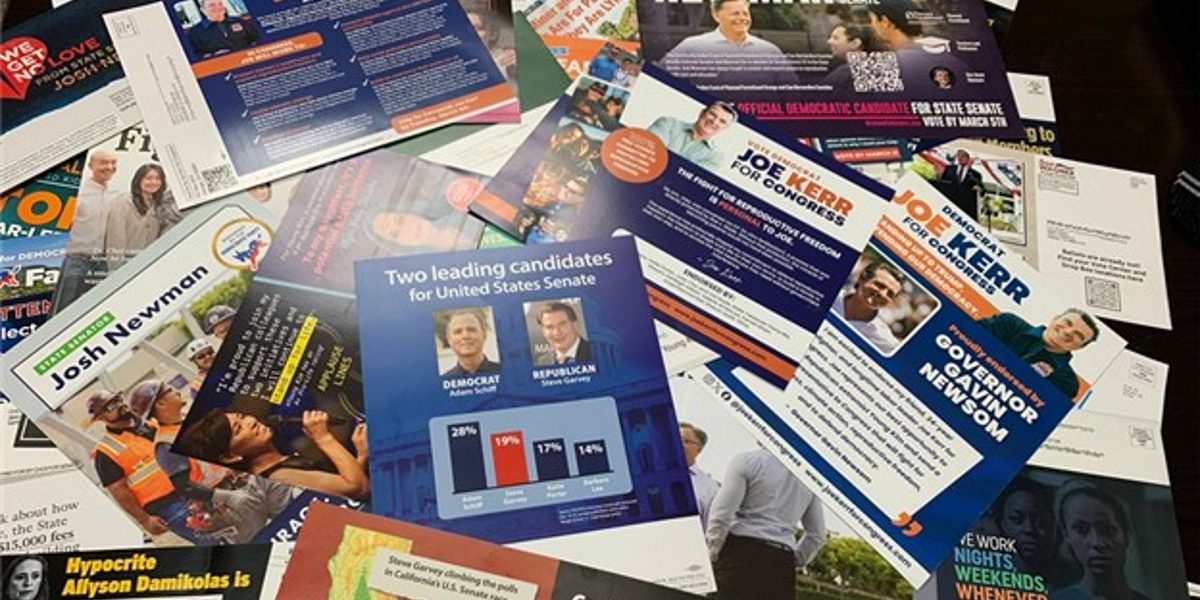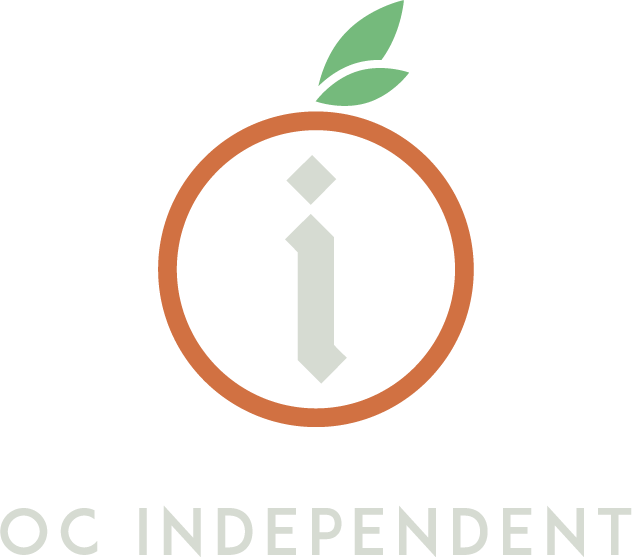The costs of waging election campaigns is truly shocking – in California, it is not unusual to see ballot initiatives campaigns – pro and con – costing between $50 and $100 million. Also disturbing is startling array of interest groups involved – such as the AIDS Healthcare Foundation cynically spending hundreds of millions of dollars on multiple rent control initiatives instead of using that money to help people with AIDS. The evolution of this over the years has been extraordinary to watch.
This year’s March Primary in California included:
- No real contest for republican or democratic presidential candidates
- A lackluster lineup of US Senate Candidates
- The usual slate of state offices and US House races
- A few judgeships
- One ballot initiative
Even without a packed ballot, this is what the mail looked like for ONE household –

Over 70 pieces of mail for an election with comparatively little at stake. The volume of election communications making its way to voters has increased dramatically – a trend that shows no signs of abating.Looking back at recent California political history offers insight into why this is so. Ballot Initiatives in the 1970s
There were 133 ballot initiatives from 1970-1979, with two separate “special election packages” in 1973 and 1979. The bulk of these initiatives dealt with standard governance questions – general obligation bonds, taxation issues, land conservation, government oversight, etc.

Generally speaking, that is what ballot initiatives were used for at that time – relatively mundane changes to governance or an overarching civic project on the state level.
A different dynamic operated at the local level, as municipalities raised property, sales, and business-related taxes on such a scale that the state was becoming unaffordable for many. And that’s when people started using the ballot to push back.
The Taxpayer Revolt – 1978’s Proposition 13
It has been 46 years since the passage of Prop 13, and as a consequence many Californians are not familiar with the history behind that landmark law. There are eerie similarities between the economic stagnation of the late 1970s and the crises we face today:
- Rampant Inflation
- Interest rates in the teens
- Gas prices, shortages, and rationing
- A stifled economy

Add on top of that efforts at the state and local levels to boost municipal revenues through ever-increasing taxes, and it became clear to voters across the state that their trajectory was unsustainable. However, the villain at that time was taxes. Howard Jarvis led the way with an overwhelmingly popular tax limitation plan: Proposition 13. The measure was supported by voters in every corner of the state, with the exceptions of the City of Los Angeles, the core Bay Area cities, and Lake Tahoe – launching a new era of populist politics in California.
The Prolific Era of the 80’s
Ronald Reagan rode the wave of the taxpayer revolt into the White House to start the decade. Jerry Brown was in his second term as Governor (the first time around), while Governor Deukmejian would oversee the bulk of the 140 ballot initiatives of the 1980s.
California businesses started to come under attack as the 1980s began as ballot initiatives centered around low rent housing, rent control, and taxing oil profits all appeared on the 1980 June primary. That trend continued through the decade.
Greater use of automation increased the ability of campaigns to deliver campaign messages – mailers, print materials, etc. – to voters This, in turn, made ballot initiatives more accessible and attractive to more interest groups culminating in a 1988 election cycle during which voters were confronted with nearly 40 ballot initiatives.
As the decade closed, the focus of ballot initiatives increasingly shifted to social and cultural issues such as AIDS, campaign finance, housing, hunger, homelessness, and tobacco. Ballot initiatives became blunt instruments for regulating the insurance industry, tort reform, and pension/ public finance disclosure reform – setting up another interesting shift in the ’90s.
Rock and Roller, Cola Wars, I Can’t Take It Anymore
Ok, so technically, it came out in September of 1989, but Billy Joel’s “We Didn’t Start the Fire” set the stage perfectly for a turbulent 1990s political scene. After 40 initiatives in 1988 including Prop 103’s revamp of the auto insurance marketplace, voters were asked to decide on 45 more initiatives only two years later, with the 1990 crop ranging in topics from term limits to hospital districts. The remaining 8 years saw an additional 91 initiatives where culture wars and businesses became more of a target for ballot box regulation.

Most people remember the ballot initiatives related to minimum sentencing, class size reduction, AIDS disclosures, toxic land clean up, prison reform, attempted term limit reforms, education vouchers, and, of course, the infamous Prop 187, the “Save Our State” initiative to address citizenship issues – all of which became very divisive issues of public policy.
This coincided with the explosion of the cable news era; advertising on cable became a cheap alternative to broadcast media, and the cable news channels were scrambling for content to fill their airtime. This allowed ballot initiatives to reach a broader audience and dive into issues more deeply.
Additionally, advances in computing enabled every campaign to pull together previous election turnout data, micro-target messaging, and turnout models that better reflected voter behavior.
- Producing accurate walk sheets for volunteers to speak to high-propensity voters.
- Comparing databases to refine messaging to interest groups.
- Speeding up the production/ addressing/ sorting/ sending of mass mailings.
- The advent of email messaging campaigns and fundraising efforts.
- The earliest examples of websites for campaigns.
- The start of online processing of contributions.
During this decade, we also saw ballot initiatives about alcohol taxes, pesticide regulation, motor vehicle taxes, earthquake safety, child care, toll roads, tax exemptions, food products, health care, passenger rail, non-profit organizations, tobacco, insurance, minimum wage, marijuana legalization, pest control, tribal gaming, stable management, and utilities all faced ballot initiatives raising the profile of industry being under attack by ballot initiatives.
Between the added cost of commercials, media campaigns, further computerization, and the crowded political fields, repetition of messaging became more important than substantiative discussions of the policies at the core of the ballot initiatives.
Next: Part 2 – Campaigns Enter the Digital/Data-Driven Era


